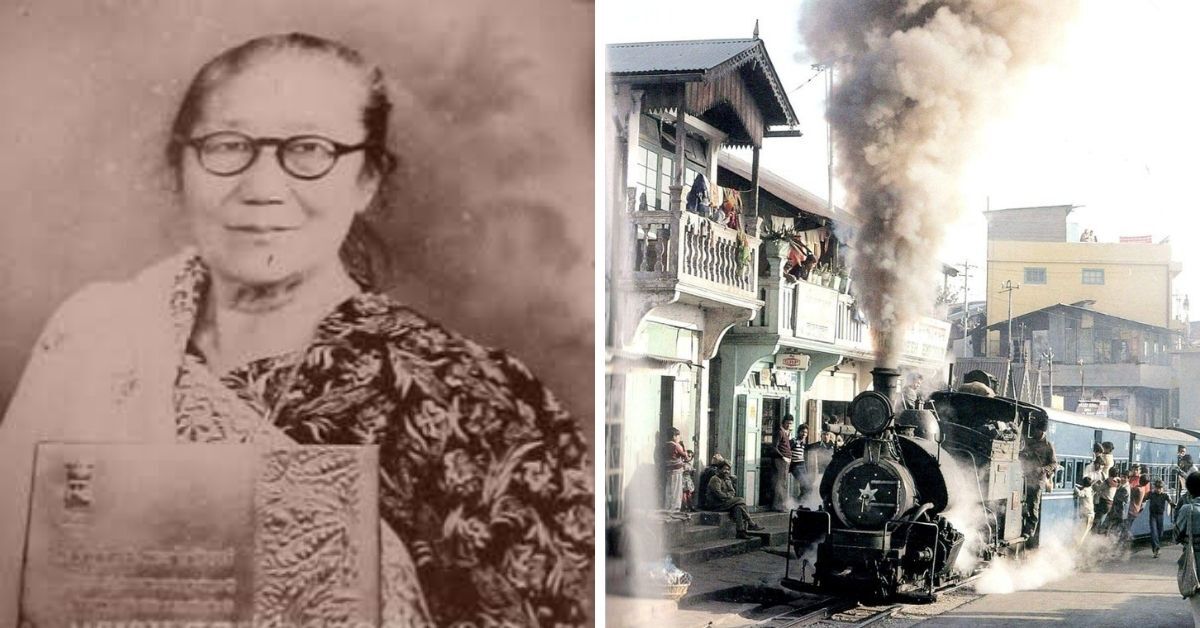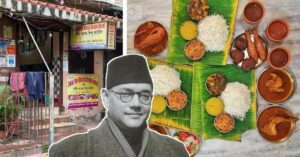Unsung Teenage Heroine Who Helped Netaji Escape, Fought For 10,000 Tribal Workers
An unsung freedom fighter who helped Netaji Bose escape and fought alongside Mahatma Gandhi in the Non-Cooperation movement, Helen Lepcha (also known as Savitri Devi) remains lost in the pages of India's history.

A little over a century ago, in the Himalayan town of Kurseong, an hour’s drive from Darjeeling, West Bengal, lived a woman who was an integral part of Mahatma Gandhi’s Non-cooperation Movement. She led a procession of over 10,000 coal mine workers and helped Subash Chandra Bose escape his internment in Kurseong.
Escaping an arrest following a warrant issued against her, she lived at Anand Bhawan (now Swaraj Bhawan) — the residence of Jawaharlal Nehru in Allahabad where she met multiple local Congress leaders. Despite mass popularity, she chose to lead a simple Gandhian life until she breathed her last on 18 August 1980.
A hero in her own right
HELEN LEPCHA @ Savitri Devi.
From Sikkim. Fought for independence in Darjeeling, UP and Bihar. Influenced by Gandhian mvt, later by SC Bose. Involved in helping the escape of Bose. pic.twitter.com/WF7soeDU3a
— mac (@dr_madras) June 13, 2018
Helen Lepcha belonged to the indigenous Lepcha community, an ethnic group scattered across Sikkim, the Darjeeling Hills, the south-western parts of Bhutan and the Ilam District of Nepal.
Born on 14 January 1902, in Sangmu Village (South Sikkim) to Mr and Mrs Achung Lepcha, Helen was the third of seven children. Her family moved to Kurseong shortly after she was born. Surrounded by lush green tea estates with well-pruned bushes, the towns of Kurseong and Darjeeling started witnessing the arrival of education and infrastructural development from the early 19th century. This created ample job opportunities as compared to the then princely state of Sikkim, leading Helen’s father to move to Kurseong.
A fresh school dropout, Helen, joined the Charkha and Khaddar movements that were being propagated in the hills in 1917. A speech delivered by a Bengali gentleman from Calcutta is said to have struck a chord with her. With a conviction to dedicate her life for the cause of her motherland, she left for Calcutta in 1918. Under the tutelage of Ishwar Chandra Vidyasagar’s grand-daughter, Helen learned the art of spinning at her charkha training centre. Owing to her skills, she represented Calcutta at the Khadi and Charkha Exhibition in Muzaffarpur, Bihar.
In 1920, Bihar was torn down by floods affecting hundreds and thousands of people. Helen, selflessly helped the flood-ravaged people and toured the famine struck areas with tenacity. While volunteering, she met Mahatma Gandhi who had come to visit the aggrieved families. Moved by her dedication, a thoroughly impressed Gandhiji invited her to Sabarmati Ashram. At the Mahatma’s invitation, she visited the Ashram where he rechristened her Savitri Devi, as the name ‘Helen’ gave an impression of a foreigner. Helen vigorously participated in the activities of the Congress Labour Union as a leader of the party in parts of Uttar Pradesh (UP) and Bihar.
In 1921, following a meeting at Muhammad Ali Park in Calcutta, she joined Gandhi ji in the Non-cooperation Movement. Subsequently, holding a tri-colour, Helen led a procession of over 10,000 mine workers of the Jharia coal fields (now in Jharkhand) and protested against the exploitation of tribal labours and their replacement. Her soaring popularity perturbed the British. They issued an arrest warrant against her, escaping which she lived in hiding at Nehru’s residence in Allahabad.
In 1921-22, the Non-cooperation Movement reached its pinnacle but the news of her mother’s illness forced Helen to rush to Kurseong. Concurrently, the movement was penetrating into the tea gardens of the Darjeeling hills despite efforts made by the British to keep the hills free from the nationalist movement, as the Gorkha soldiers were their greatest strength. However, this was a result of the British turning a deaf ear to the socio-economic grievances of the tea plantation workers. This stimulated Helen to foster her nationalistic zeal to the Darjeeling hills.
Helen drew together local volunteers and started a door-to-door campaign against foreign goods. Despite a curfew imposed by the police as a result of her campaign, she continued her crusade. This led to her arrest on 29 January 1922. Together with 12 others, Helen was imprisoned at the Darjeeling Sadar Jail for three months, she was later put under house arrest in Kurseong for three years. There she was popularly called Helen didi (sister). In 1932, she was elected the first woman commissioner of Kurseong Municipality.
In 1939-40, when Netaji Subash Chandra Bose was held captive at his house in Kurseong, Helen was in constant touch with him. She would communicate through letters that would be hidden inside the breads sent to Bose from her husband Ishan Ahmed’s bakery. She is said to have helped him escape the house arrest from Kurseong to Calcutta and then to Germany via Kabul. Legends say, the pathan dress, moustache and the beard Netaji used to hide his identity during his escape was made by Helen in Kurseong.
In 1942, Helen actively participated in the Quit India Movement. Besides, she focused on social activism and served as the chairperson of various associations in Kurseong such as the Sherpa association, Nagar Congress, Anjuman Islamia and the Lepcha association. Later in life, she also served as the Mandal of Kurseong.
On 15 August 1972, Helen’s contributions were honoured with the Tamra Patra along with a pension for freedom fighters. It was presented to her by the then Prime Minister Indira Gandhi who fondly remembered Helen from her childhood days at Anand Bhawan and called her Saili didi, referring to the birth order of a person in a family wherein saili is the third born in cases where there are more than three children. She was also made the chairperson of the Freedom Fighter Award Committee of Darjeeling district along with other members.
Stemming from humble roots, Helen’s contributions have been recognised by her birth state Sikkim, where she has been conferred with the title ‘Daughter of the soil’. Her struggles, however, remain lost from the pages of history.
(Written by Kritika Sarda)

Similar Story

Netaji Bose’s Favourite Eatery Has Been Serving Traditional Delicacies for Over 100 Years
The Swadhin Bharat Hindu Hotel in Kolkata, started by Mangobindo Panda, is a century-old pice hotel where Indian freedom fighters like Netaji Subhas Chandra Bose would enjoy Bengali delicacies.
Read more >
If you found our stories insightful, informative, or even just enjoyable, we invite you to consider making a voluntary payment to support the work we do at The Better India. Your contribution helps us continue producing quality content that educates, inspires, and drives positive change.
Choose one of the payment options below for your contribution-
By paying for the stories you value, you directly contribute to sustaining our efforts focused on making a difference in the world. Together, let's ensure that impactful stories continue to be told and shared, enriching lives and communities alike.
Thank you for your support. Here are some frequently asked questions you might find helpful to know why you are contributing?


This story made me
-
97
-
121
-
89
-
167












